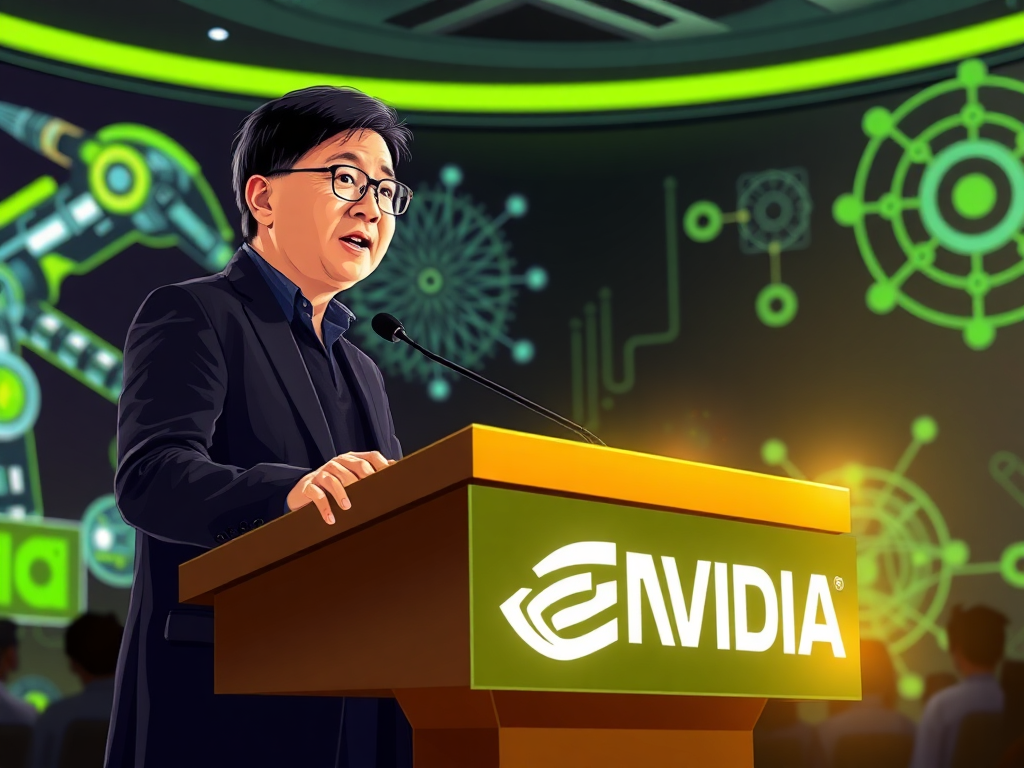BEIJING – Nvidia CEO Jensen Huang recently made headlines by sharing unconventional career advice for today’s young tech aspirants. Reflecting on the evolving landscape of artificial intelligence, Huang said that if he were entering university today, he would prioritize studying physics over traditional software or computer science.
“The future of AI isn’t just about writing better code,” Huang said during a recent public event. “It’s about understanding the physical world—how objects move, interact, and respond. That’s why I’d choose physics.”
Huang’s remarks highlight a shifting paradigm in AI development: a move from purely software-driven innovation to what he calls “physical AI,”where intelligent systems must interact with and navigate real-world environments.
Why Physics Matters More Than Ever
For decades, the AI field has largely centered around data, algorithms, and computing power. Nvidia itself played a pivotal role in accelerating AI with its graphics processing units (GPUs) and support for deep learning breakthroughs such as AlexNet in 2012.
But as AI technologies advance, they are increasingly applied to **robotics, autonomous vehicles, and simulation-driven applications**. These require machines that not only analyze information but also understand physical dynamics like force, motion, and causality.
According to Huang, mastering physics is essential to designing AI systems capable of reasoning about and acting in the real world.
Educational and Industry Implications
Huang’s advice signals a need for broader, interdisciplinary education that blends software expertise with physics, mechanical engineering, and material science.
In his view, future engineers and researchers will need to be fluent in both digital programming and the laws that govern physical interactions to build the next generation of intelligent machines.
Nvidia’s Role in Physical AI
Nvidia is actively developing platforms to support this transition. Its Omniverse platform offers a 3D simulation environment where AI can be trained with realistic physics. Meanwhile, Project GR00T focuses on creating foundation models for robotics that combine AI with real-world understanding.
These initiatives underscore Huang’s belief that AI must move beyond virtual spaces and engage directly with the physical world.
The next wave requires us to understand things like the laws of physics, friction, inertia, cause and effect.
Jensen Huang
Co-founder and CEO, Nvidia
A Timely Message
Huang delivered these insights during a high-profile trip to China, coinciding with recent changes in U.S. export policies allowing Nvidia to ship certain advanced chips to the Chinese market under strict regulations.
While the geopolitical context looms large, Huang’s focus on education and innovation points to Nvidia’s longer-term strategy: fostering a new generation of AI talent equipped for the challenges of physical intelligence.
Jensen Huang’s advice to young learners and professionals is clear: **The future of AI lies at the intersection of software and the physical world.** Those who understand both will shape tomorrow’s technology landscape.
As AI evolves, it won’t just be about coding—it will be about making machines that truly **understand and interact with the world around them**.



1 comment
[…] Now ChatGPT Sees 2.5 Billion Prompts a Day—Here’s Why It… Nvidia CEO: If I Were 20 Today, I’d… Grok AI: How Elon Musk’s Chatbot Became a… Samsung Unpacked July 2025: Galaxy Z Fold […]